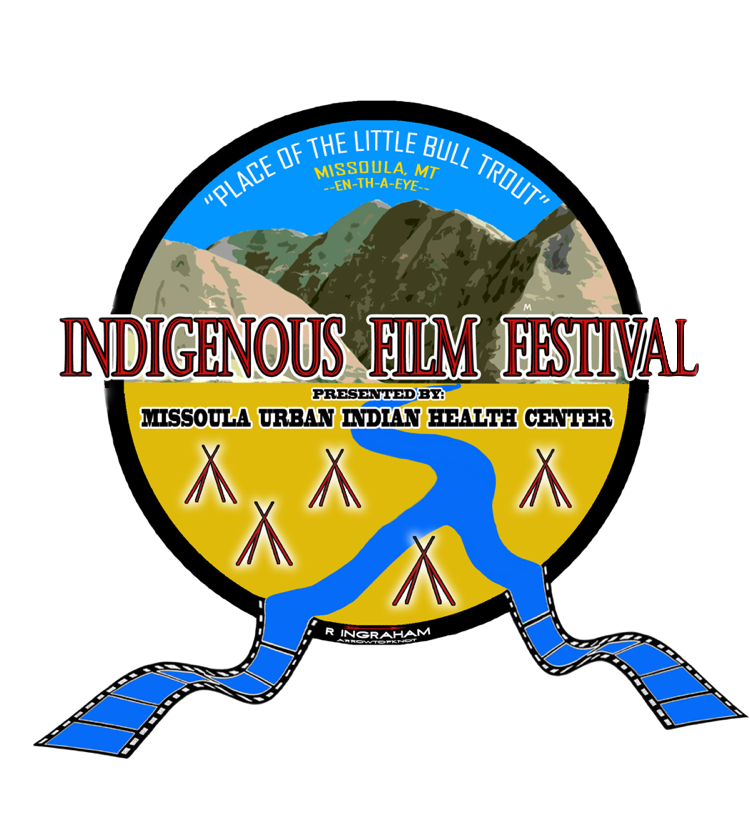ABOUT THE FILM
Navajo Math Circles
Hundreds of Navajo children in recent years have found themselves at the center of a lively collaboration with mathematicians from around the world. The children stay late after school and assemble over the summer to study mathematics, using a model called math circles, which originated in Eastern Europe and which has proliferated across the United States. This notion of student-centered learning puts children in charge of exploring mathematics to their own joy and satisfaction, with potentially long-lasting results.

Navajo Math Circles is a one-hour film that is documenting the meeting of two worlds: that of some of the country’s most accomplished mathematicians and math educators, with the children and teachers in the underserved, largely rural Navajo educational system.
Math itself is a cross-cultural language, and the film is designed to inspire cross-cultural understanding on multiple levels. We hope the film will encourage those who view it to embrace math, to embrace others different from themselves, perhaps even to start math circles in their home communities. A working knowledge of mathematics is necessary for most advanced careers in modern society, and it is partly for this reason that programs like math circles can be so powerful: they not only inspire learning in the moment, but they can have profoundly lasting effects on children’s lives.

The film aspires to bridge the “culture gap” between the humanities and the sciences by inviting viewers into the lives of the children and teachers of the Navajo Nation; we will utilize mathematics itself as a connector across languages and backgrounds.
Navajo Math Circles follows the students, their Navajo teachers, and the mathematicians from outside the reservation as they tackle mathematics problems, go about their daily lives, and share their dreams about a better future for the Navajo Nation.

Math circles are a way to involve professional mathematicians with students and teachers at all grade levels. So it’s an opportunity for mathematicians to reach out and get involved and share their enthusiasm for mathematics. It’s relatively new in this country. And now there are hundreds of math circles all around the country, and more starting every day, getting more mathematicians to actually engage with K-12 education. It’s not “here’s how you perform computations”; instead, it’s “here’s how you can think about ideas,” in a very natural manner.
Riverbend Community Math Center, South Bend, IN
The project involves three expeditions in 2014 and 2015. The first took place in July 2014 and successfully established the main characters whose stories will be followed during the two shoots in 2015.
Filming Navajo Math Circles in 2014
The production plan for the film envisages three separate expeditions to the Navajo Nation. The first of these was completed with seven days of videotaping between July 19 and 25, 2014. We collected approximately 14 hours of material and over a thousand still photos. The crew consisted of George Csicsery as producer/director, cinematographer Ashley James, audio recordist Kathryn Golden, and Native American assistants Kee Curley, Jacqueline Begay, and Neilroy Singer.

I was having a little trouble with math; I never really liked it. My mom really wanted me to have a better grade in math for 7th grade. And she found the Diné College program, and thought it was a nice thing for me to do.
Videotaping began on July 19, 2014 at Monument Valley High School in Kayenta. Several morning and afternoon sessions of a math workshop for about 30 primary and secondary teachers from schools throughout the Navajo Nation were filmed. The teacher training workshop organized by Dr. Henry Fowler of Diné College was led by Tatiana Shubin, with sections taught by David Auckly, Amanda Serenevy, and several of the teachers who had been running the Math Camp at Diné College during the previous week. These sessions were designed to help teachers by providing them with problem-solving ideas they can deploy in their own classrooms, and deepening their understanding of the math behind the problems. We filmed two sessions, Exploding Dots, a session for high school teachers led by Tatiana Shubin that helps teachers explain place value, addition, multiplication, subtraction, and division, and standard manipulations of polynomials to your students. In Toilet Paper Math, a session for elementary school teachers led by Dave Auckly, he demonstrated several ways to use toilet paper as a playful, yet useful manipulative to help teachers describe various number concepts to their students.
The sequences showed the teachers actively engaged with each other as they worked on the problems posed by leaders. Several interviews with the teachers were conducted during the course of the day to gauge the value of this training, to get a sense of conditions at their schools, and to learn their hopes for bringing improvements to their classrooms via the math circles idea.

When you say math, your sirens go off, you get scared. Because you really don’t know what you’re in for. And I tend to feel that way. But I’m hoping to get out of that. And I really would like to see my kindergartners perform better, hands on, and being able to justify and problem solve what they’re doing in the classroom.
The second day of videotaping took place on Sally Fowler’s land near Tonalea. Sally Fowler is Dr. Henry Fowler’s mother. Much of the day involved filming with Dr. Fowler and Sally Fowler inside a newly constructed male hogan. Dr. Fowler told his life story, attributing his successful education to his mother’s advice that he should always remember his Navajo roots and value the traditional way of life. He described how his early math education involved concepts from nature, and observation of his mother’s way of measuring and calculating for her rug weaving. We filmed Sally Fowler as she worked at her loom, and Dr. Fowler at the family’s sheep pen.
Henry explained that bringing mathematicians from outside to Navajo schools is essential to the survival of the Navajo Nation. He sees the students attending Math Camp as the Navajo Nation’s future leaders. The mathematical sessions at the Diné College Math Camp are coupled with programs on Navajo culture and language to help students develop a stronger sense of Navajo identity.


We always considered the students we would meet as the project’s backbone. Observing them for the first time while filming problem-solving sessions led by Dave Auckly, Matthias Kawski, Bob Klein, and David Gay, it did not take long to zero in on the most active participants who would later emerge as main characters. Fortunately, we had been tipped off about some of the quieter students who would also become important subjects for the documentary.

The fourth day of filming documented the arduous hike by Math Camp students and their leaders through Canyon de Chelly. With our equipment load, steep and sandy trails, and triple-digit July temperatures it was impossible to keep up with the students as they descended into the canyon, trekked along the sandy floor, and climbed out onto the opposite rim. After securing permits from the National Park Service, the Navajo Nation Film Office, and Navajo Nation Parks and Recreation Department, we engaged a guide from Antelope Tours, and were taken into the canyon by van. We set up to await the student hikers at two different points along the canyon’s sandy floor. At their first stop, where they had lunch, we filmed interviews with students Cheyenne Bedonie, Irvilinda Bahe, and Natanii Yazzie. We also shot an interview with mathematician Matthias Kawski of Arizona State University (ASU). Matthias was one of the first to help Tatiana Shubin bring math circles to Navajo schools. He had observed the high dropout rate among native students at ASU, and believes that awakening an interest in mathematics at the high school level or earlier may help reverse that trend. Matthias talked about the initial shyness of students when meeting strangers from outside. He feels that open-ended questions are a big change for how students learn math.

We finished the day videotaping at Tsegi Overlook along the canyon rim with Native American musician Travis Terry. He performed on three different types of hand-crafted flutes, improvising pieces that reflect the rhythms of life, natural cycles such as the four seasons, and the stages of life. Over an hour of these performances were licensed as original compositions for the film’s soundtrack.
Our last three days of shooting were centered around activities at Diné College, with excursions near the end of each day to the homes of students and other locations. We concentrated on shooting as many interviews with students as possible in order to identify and work with those we would follow up with on subsequent visits. We cast a wide net, looking for interesting personal stories that reveal the conditions of life on the reservation, address the challenges faced by Navajo students, establish their hopes and goals, and provide some sense of how the experience of their intensive contact with mathematicians will affect their lives. The results are highly gratifying. Some students remained shy, but others were surprisingly candid, as if they had been waiting to tell their stories.
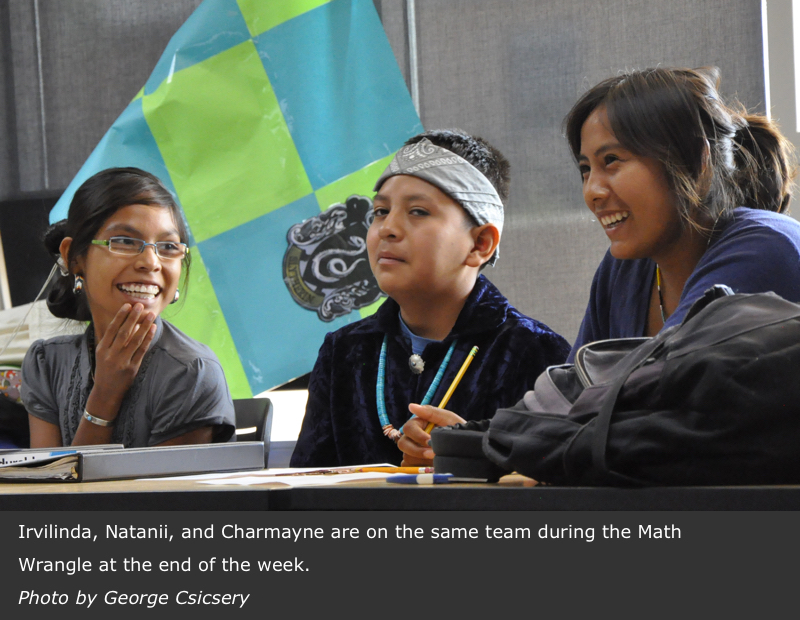
Charmayne Seaton, 15, attends St. Michael Indian School near Window Rock. Ever since she participated in a math circle there and met Tatiana Shubin, Charmayne has considered her as a second mother. Charmayne’s powerful interview propelled us to visit her in Ganado where we met her parents and shot a spectacular scene of Charmayne herding her sheep. She comes from a family of runners. The mountains behind the family's place are home. She used to want to escape Ganado, but since attending Math Camp, her goal is to get into Stanford, and then come home to help her people. She is dedicated to “finishing strong.”
Other students we got to know were Tylene Descheny, from Rough Rock Community School, a second year Math Camp student. She wants to “meet new people, and learn some new math.” Two boys we interviewed who had been in math circles the longest were Stephen “Buddy” Joe and Michael Begay, both students from St. Michael Indian School. There were others, many of whom we hope to meet again in March 2015, during our next expedition.

Right now I want to be a physicist, and I also want to be an astronomer. And that’s science, and science has math in it. So I thought that was pretty cool.
Near Round Rock we met 13-year-old Irvilinda Bahe’s relatives. Her grandfather walked us through a dessicated field where he was trying to plant corn. He explained the conditions and challenges to Irvilinda on camera. She was one of the bright young students at the Math Camp who also shows a serious interest in Navajo culture.
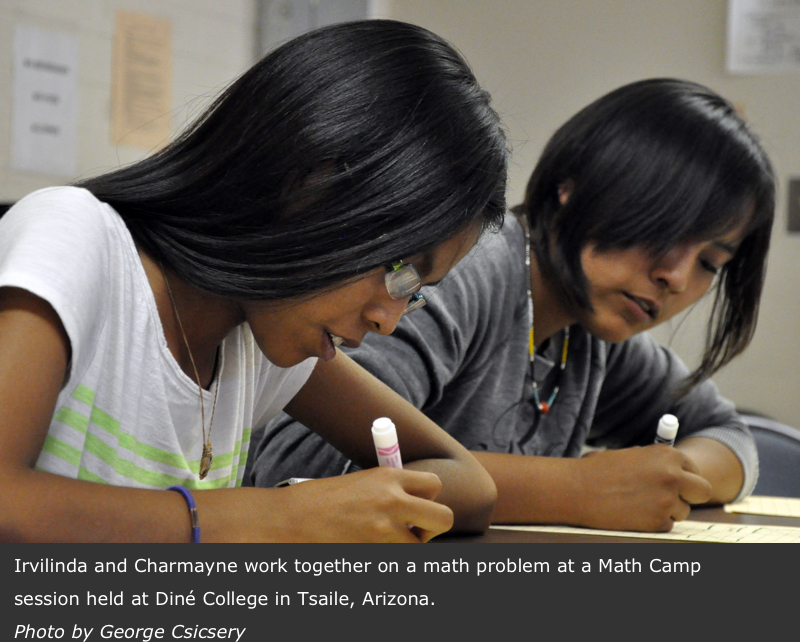
I want to help extend my culture and traditions. I ask my relatives about how things were created, and our creation stories.
The person responsible for creating the Navajo cultural component of the Math Camp at Diné College was Dawnlei Ben, who works as Henry Fowler’s assistant at the college and grew up in Canyon de Chelly with no running water or heating. “I’m okay with that. We have cornfields, apples, plums, peaches, apricots on our land,” she says. She was raised traditional and wants to impart it to children so that the culture can survive. She has taught Navajo remedies. On the Canyon de Chelly excursion, she put mint water on the heads of overheated hikers. At Math Camp, she teaches students the game of Tsidil (sticks and stones), showing them how to make markers and wooden dice by hand exactly as her grandmother taught her to do. We filmed her story and a scene of two boys playing Tsidil.
Dawnlei’s goal is to help the students discover who they are as Navajo. Both the Navajo leaders and the mathematicians from outside are searching for ways to link the math they are communicating to students with the traditional Navajo cosmological, architectural, and artistic concepts rooted in mathematics.

Canyon de Chelly and Diné College
On our final day at Tsaile we filmed the Math Wrangle, a three-way problem-solving competition between two teams of students and a third team made up of the teachers. This was followed by a graduation ceremony during which outside speaker, Jerimiah “Chebon” Habon, spoke about overcoming the obstacles in his life to become a successful Microsoft executive. Henry Fowler exhorted the students to excel, because they are the Navajo Nation’s future. Irvilinda Bahe sang a song, alternating between Diné and English. It was about wanting a better education.
Bob Klein, one of the leaders, was interviewed near Lukachukai on our last evening. A mathematician at Ohio University, he has studied education in impoverished regions around the United States. For him the Navajo Math Camp was a transformative experience. “The Navajo students who take the daily trip to Math Camp are courageous,” he said.
A key interview with mathematician Tatiana Shubin was videotaped at her home in San Jose on October 9, 2014. Tatiana’s summing up comes very close to what we hope to communicate through this film. “Mathematics is very close to Navajo culture, because both things are deeply rooted in the love of beauty. Navajo culture is really based on the idea of beauty. And mathematics is all about beauty.”

But we also want to help other kids. We want to influence kids. We want to see the sparkling in their eyes that comes from doing beautiful mathematics. And we also want to involve teachers—to see that the teachers who have to do so much, sometimes boring, sometimes routine stuff—that they also find something very exciting in what they will teach their kids. And that’s probably mostly what we want: to influence both kids and teachers.
- Tatiana Shubin, mathematician
Filming Navajo Math Circles in 2015
By late February 2015, planning had begun for the second production expedition to the Navajo Nation. The main objectives of this eight-day shoot, organized for March and April, was to get to know some of the students in our footage better and to go deeper into their stories. We wanted to see their homes and their schools, and to meet their parents and siblings.
A second goal was to follow up with Navajo math teachers we had first met in 2014, and to visit them at their schools. Organizing shoots at the individual schools during classroom hours involved much more effort. The teachers, parents, school administrators, and in some cases, Department of the Interior personnel, all had to clear our presence on the campus.
Fortunately, we had the same great crew, as in 2014. Ashley James was cinematographer, and Kathryn Golden, audio tech. Our Navajo production assistants were again Kee Curley and Neilroy Singer. Because she had become an invaluable member of the crew in 2014 by negotiating access and arranging for the participation of various individuals, Jacqueline Begay was now officially our local production coordinator. Asali Echols, who has been editor on the film since September 2014, joined us to replace Neil on the last day.
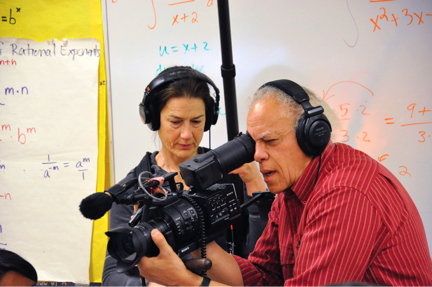
Kathryn Golden and Ashley James filming in a classroom at Many Farms High School for Navajo Math Circles.
The eight-day shoot started on March 26, 2015, at Rock Point Community School in math teacher Lashanna Descheny’s math class. During an interview after the classroom scenes, Lashanna described the challenges faced by teachers at Navajo reservation schools, and provided eloquent explanations and reasons for staying at Rock Point rather than seeking a higher-paying position off the reservation. Lashanna had worked with Henry Fowler, adopting his techniques for bringing everyday questions of Navajo life to the math problems posed to students. She is a proponent of communicating the Diné language and Navajo culture to her students.
From Rock Point we traveled to St. Michaels, where we interviewed Math Camp student Stephan “Buddy” Joe, and his grandfather Stephen Joe, at their home. Buddy, brought up by his grandparents in the fundamentalist Christian traditions of the Nazarene Church, is a senior at St Michael High School, and looks forward to a career in medicine and science. He embraces math for both practical and philosophical reasons, having thought about it deeply. He values learning languages, and studied Hebrew and Arabic, but is wary of the native cultures programs encountered at both high school and at Math Camp. They are interesting, but the beliefs and stories sometimes conflict with the truth proclaimed in the Bible.
Buddy’s grandfather, a Nazarene minister in St. Michaels, is proud of Buddy’s religious education. He talked about growing up in a hogan, and early exposure to both Christian and Mormon religious education before being sent away as part of the Mormon Indian Placement Program. Two of Stephen Joe’s stories are included in the extra features edited to accompany the film, Navajo Running and Exile and Return.
On March 27, we filmed in math teacher Corvina Etsitty’s classroom at Many Farms High School. Corvina has been inviting math circles to her classes since she first heard about them from Henry Fowler. Much like Dr. Fowler, she combines math with common experiences of Navajo life.

- Corvina Etsitty, math teacher at Many Farms High School
We interviewed two of Corvina’s students, Brandon Hobbs and Jaime Tsosie. They had participated in the 2014 Math Camp at Diné College, and are an inseparable pair. The high school juniors think of the math they are learning in practical terms. They plan to work together after finishing school, with Brandon running a construction company, and Jaime working for him.
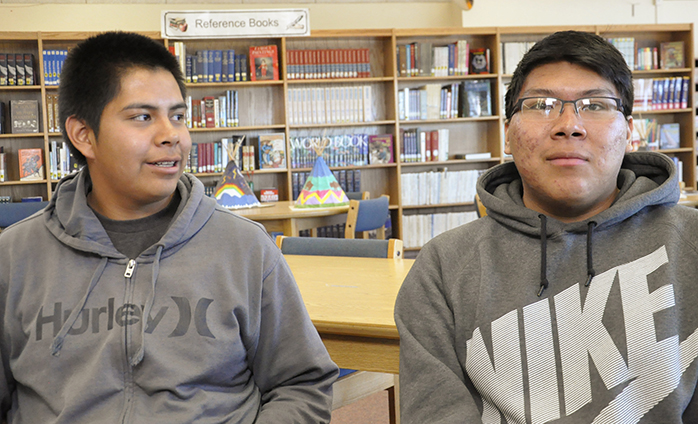
Jaime Tsosie and Brandon Hobbs see math circles as a way to prepare them for starting a business after Jaime graduates from college.
James Tanton is a research mathematician interested in bridging the gap between the math experienced by students and the creative mathematics practiced and explored by mathematicians. He worked as a college professor for a decade, as a high-school teacher for a decade, and is now Mathematician in Residence at the Mathematical Association of America (MAA) in Washington, D.C. This was his first visit to the Navajo Nation, where he led math circles for a week. We videotaped a math circle he ran in one of Corvina Etsitty’s classes and interviewed him after the class. The next day we filmed him leading a teacher’s workshop at Diné College.

- James Tanton, mathematician
That afternoon we were at Cortez Springs, not far from Many Farms, at the home of Anson Etsitty, a medicine man. We had already interviewed his adopted daughter Darenda Black at the 2014 Math Camp, and she had come to Cortez Springs with her mother Sandra Etsitty and three little sisters to be interviewed again for the film. Anson Etsitty talked about his own upbringing, schooling, work history, and his life as a medicine man. He would like to instill traditional values, particularly songs and stories, in his children. Currently he was preparing Darenda for her kinaaldá ceremony—a traditional celebration of a girl’s maturity.

Darenda Black has learned much about traditional Navajo culture from her stepfather Anson Etsitty, a certified Hatałii (medicine man).
Sandra Etsitty lives in Flagstaff with her four daughters. She explained that she wants her children to grow up with a more complete knowledge and experience of Navajo culture and language. Darenda echoed these sentiments and talked about her interest in learning more about her language. Darenda and her mother looked forward to Darenda’s participation in Math Camp again in July 2015.
On Saturday, March 28, we filmed at two teacher’s workshops held at Diné College, one led by James Tanton, the other by Amanda Serenevy, a veteran Navajo Math Camp instructor and math circles advocate.
All of the filming on Sunday, March 29, was around the homestead of jeweler Vernon Haskie and his family. Vernon and his wife Miranda grew up around Lukachukai, and live there with their children. He is among the more successful Navajo jewelers, and Miranda is a sociologist at Diné College in Tsaile. They have sent all of their children to St. Michael Indian School, 68 miles away. Albert Haskie, who excels at math and has been to several math circles and two Math Camps, balances his talent with a serious interest in art. He currently spends much of his free time drawing manga, and plans to study Japanese when he goes to college. The Haskie family had a lot to say about the changes in the way Navajo youth are being educated today compared to when they went to school just a few decades ago. They want Albert and his siblings to be fluent in Diné and to learn as much as possible about the traditions of his forebears.

- Albert Haskie
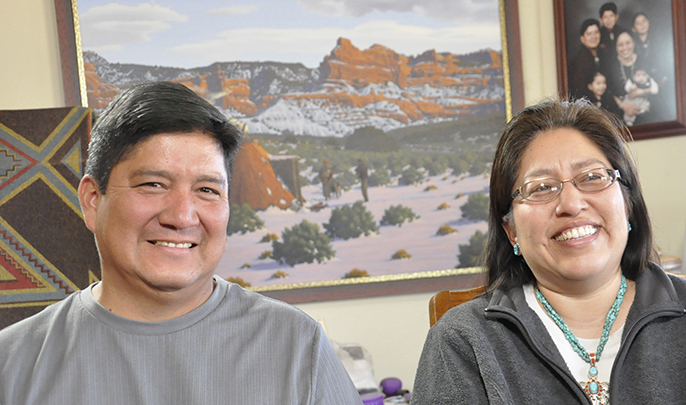
Vernon and Miranda Haskie of Lukachukai, Arizona, drive 272 miles a day taking their two sons back and forth to St. Michael Indian School. They saw Math Camp as an opportunity for their son Albert to improve his skills.
On Monday, March 30, we filmed a math circle session led by Tatiana Shubin at St. Michael High School in St Michaels. Albert Haskie was one of the students in the classroom. Then we interviewed Michael Begay, who had been at the 2014 Math Camp in Tsaile, and Sister Mary Rochford, a retired teacher. Both of them spoke highly of Sister Joan of Arc, who, unfortunately, was away and could not be in the film. Sister Joan was the first to invite Tatiana Shubin to lead a math circle in a Navajo school in 2012, and has been an influential and well-liked math teacher for many of the students in the film. The end of the school day gave us the opportunity to film a scene of Vernon Haskie picking up his two sons from school.

On March 31 we filmed with Charlotte Seaton and her daughter Charmayne at Ganado. Charlotte explained how her own job change forced the family to transfer Charmayne from St. Michael School to Ganado High School. We filmed scenes of Charmayne arriving at the end of the one-mile dirt road on a school bus, and walking home, doing her chores, and tending to the family’s sheep and horses. She aspires to attend a good university, and then return to work on the Navajo reservation.
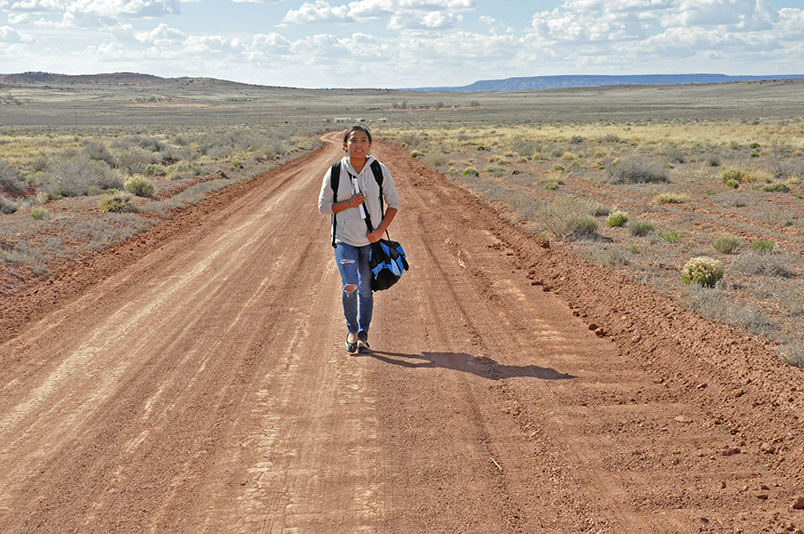
"I have to do the chores once I get back almost every day. I don’t get home until about 4:20, 4:30, since I have to walk up the road. And by then, the sun’s still pretty high, so I have to let out the sheep, along with the horses."
At the end of the day we returned to Window Rock to shoot a sequence with Michael Begay running past the Window Rock monument. On April 1 we filmed an interview with his mother, Alice Tracey, in Fort Defiance. Alice discussed some of the issues facing education in the Navajo community, and why the Diné College Math Camp is a way to further her son’s education both in math and in Navajo culture. The rest of the day was spent filming landscapes around Round Rock, and chasing shots of school buses along the highways around Many Farms, Chinle, and Ganado.

On April 2 we started by filming an interview with Stanley Ben, Dawnlei Ben's father, inside the hogan at the Navajo Nation Museum in Window Rock. He discussed life in Black Rock Canyon inside Canyon de Chelly, where Dawnlei was born and raised. Stanley provided interesting insights into the folklore transmitted by Dawnlei's grandmother. Dawnlei now uses this material in her Navajo culture program at the Diné College Math Camp. Stanley recounted great stories and explanations that will be of interest for archives of Navajo traditional life beyond the scope of this project. His explanation of the female hogan’s construction and its connection to childbirth, numbers, and music is an example of how math and Navajo cultural traditions are intertwined. A photographic record of the Ben family’s life stretching back to the 1960s was made available for use in the film by photographer John Craig, who documented their life in the canyon over several decades.

Stanley Ben has lived in Canyon de Chelly, where he learned about surviving without water and the mythological connections to everything in nature from "grandma."
That evening we proceeded to the home of Dawn Yazzie. Her son Natanii was one of the promising Math Camp students we met in 2014. Interviews with Dawn and Natanii yielded stories about the changes in education on the reservation, and the renewed push for saving the Diné language and preserving the Navajo cultural heritage through educational programs. Dawn was one of several parents to eloquently describe the suppression of native culture experienced by previous generations. The boarding school Dawn’s mother was forced to attend pursued a policy that punished children for speaking Diné.

A final three-day shoot was planned for July 23-25, 2015, so that we could have coverage of the 2015 Math Camp at Tsaile and do followup interviews. Many of the students we had worked with on the previous shoots were again at Math Camp, and this was a last opportunity to film with them. This time we had an additional assistant, Kee Curley’s son, Keenan.
We began at Diné College on Thursday, July 23, by filming mathematician Joe Buhler demonstrating and teaching juggling patterns to the Math Camp students. That afternoon we filmed a workshop during which professor Buhler had the students work out details of the Pythagorean theorem and proceeded to a discussion of Fermat’s Last Theorem.

Between workshops, mathematician Joe Buhler gave Math Camp students an introduction to juggling patterns. Buhler is among the foremost experts in discovering mathematical patterns in juggling and then inventing new ones.
That afternoon we stumbled upon student Briana Littleben filming a sequence for a private music video she was making about the Math Camp using her iPhone. We quickly persuaded her to let us shoot over her shoulder, and to allow the use of clips from her video in our film.
We then filmed Tatiana Shubin and Amanda Serenevy preparing students for the next day’s math wrangle competition. It would be the last day of the 2015 Math Camp, and the wrangle was the highlight, to be followed by the awards ceremony.

At sunset we interviewed Irvilinda Bahe, and her parents, Carmelita Charley and Augcus Begay, on a bluff overlooking Chinle’s hospital. Carmelita and Augcus talked about Irvilinda being the family dictionary.

Carmelita Charley and Augcus Begay are proud of Irvilinda Bahe. "She is our dictionary," says Carmelita.
Filming on July 24 began with another hour of preparation for the math wrangle at Diné College. The wrangle itself was then covered in depth, allowing us to present detailed examples of the students working out problems from beginning to end. We also interviewed Briana Littleben about her music video. She agreed to let us come to her home at Rock Point and meet her mother.

In April 2015, Duane Yazzie, with the help of a few other local teachers, started a regular math circle—meeting twice a week—at Tsehootsooi Elementary School in Fort Defiance. It is the first regularly run math circle organized by a Navajo teacher. We interviewed Duane about how and why he got involved and his hopes for the future.

I teach currently in Fort Defiance at Tsehootsooi Intermediate Learning Center, and I teach 5th grade. After a couple of workshops, I decided to go ahead and try launching my own set of math circles. And it was hard as a teacher, kind of just to step back and not be the giver of knowledge and of formulas and of recipes. "This is how it works, this is how it’s gonna work." But the kids loved it so much.
- Duane Yazzie
We covered some highlights of the 2015 Math Camp awards ceremony. Our final scenes for the day were exteriors with Tatiana Shubin that we shot around Lukachukai and in the mountains above it.
We started our last day of shooting at Briana Littleben’s home near Rock Point. We interviewed Briana’s mother Geraldine, and then listened as Briana explained that her music video served as a memento of the bonding that took place at Math Camp between the students of different ages from different schools, and that while it is an artifact of the modern outside world, she remains dedicated to her Navajo identity. She spoke about having to leave the reservation for college, and about the importance of running.
We had hoped to return in late September for a final round of filming, but when this became impossible, I asked Briana to shoot some footage with her iPhone of herself running along her favorite trails. A month later she delivered several beautiful shots that are now in Navajo Math Circles.
The remainder of July 25 was spent filming exteriors between Rock Point and Window Rock, including exteriors at the Navajo Nation Museum in Window Rock.
Post-production
The film and five extra features were edited between August and December 2015, with Asali Echols working full time as editor. Andrea Hale produced a series of animated maps to help audiences pinpoint locations on the Navajo Nation. She also produced several animated clips illustrating some of the math problems explained by the students.
Composer Alex Lu created an original music track, combining elements from songs performed in the film by two students and some parents, and the flute music by Darryl Travis recorded in the field during 2014. Composer Tyrone Jenkins produced a rap track for clips from the music video created by Briana Littleben. The sound track was mixed by E. Larry Oatfield. Color correction and online editing were completed in December 2015 by Ed Rudolph and Loren Sorensen. The world premiere of Navajo Math Circles is scheduled for January 6, 2016, at the Joint Mathematics Meeting (JMM) in Seattle, Washington.

Tatiana Shubin and a view of Shiprock.
Production of Navajo Math Circles was supported by the Mathematical Sciences Research Institute through a generous grant from the Simons Foundation, and by Vision Maker Media, and by the Corporation for Public Broadcasting.







